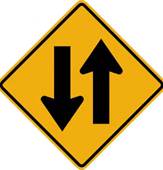Almost from the moment I arrived in New Albany I’ve advocated for a rational reversion of downtown streets to two-way traffic patterns.
 To me, it was obviously the right thing to do. By words, if not action, Mayors Garner and England agreed with me and with the hundreds of New Albany residents and visitors I’ve talked to about this topic.
To me, it was obviously the right thing to do. By words, if not action, Mayors Garner and England agreed with me and with the hundreds of New Albany residents and visitors I’ve talked to about this topic.
Now, the mere fact that it was obvious to me, multiplied by 2 sitting mayors acknowledging the rightness of the idea, can’t, unfortunately, be enough to move the ball.
That’s why I and many of my policy-minded neighbors have gathered and published studies showing that, by an overwhelming margin, smart cities are reverting back to traditional 2-way traffic patterns.
What Would It Cost?
Mayor Garner told me in 2006 it would cost $600,000, far more than I thought it would. Mayor England said it would cost $800,000.
Then, the city made significant improvements to the traffic lighting systems along Spring Street and its parallel streets, Market and Elm, spending almost $600,000 circa 2010. At that time, I was told by city officials that represented most of the cost to make the reversions. The traffic signals are ready to accept the additional LED red/amber/green lights for two-way traffic.
This is why I find it not credible when current city officials talk as if it will take an additional $2 million. It’s just not believable.
Which Streets are Being Considered?
Between neighborhood advocates and downtown businesses, the discussion includes east-west streets Market, Spring, and Elm, at least, and probably Oak. Cross streets include Pearl and Bank. Most of the other cross streets are already 2-way.
What are the Arguments for Reversion?
SAFETY
1-way street networks increase the variety and kind of conflict points, creating more confusion for pedestrians and motorists. [Walker,Kulash, McHugh]
Additional turning movements for a one-way street network increase the occurrences of vehicular-pedestrian conflicts at any given intersection. [Lum & Soe]
Ask any cop. Residents and strangers regularly drive the wrong-way on our confusing one-way street grid. With an office window overlooking Spring Street and as a daily walker on this grid, I can attest to that.
BETTER NEIGHBORHOODS
One-way traffic patterns increase natural driving speeds and make streets markedly less safe for families. They drive families off of their streets and inhibit walking, bicycling, and regular neighborhood interactions. [Smith]
Ask any neighbor who must park on the street whether they feel safe leaving their cars there when commuters use their streets as a pass-through. [Hanka & Gilderbloom]
BUSINESS RETENTION and EXPANSION
Cities large and small are listening to their downtown businesses. I have no doubt that progressive leadership (and yes, that can come from either party – or none) will correct the mistake that helped to hasten the decline of downtown commerce.
Despite an excess of boosterism from some quarters, I foresee a quickly approaching day when downtown New Albany will again start to shed businesses. A rapid mindshift among city officials to embrace reversion to 2-way traffic can help to forestall the bursting of that artificially created bubble.
It makes no sense to wait one more day. Likewise, there’s no need for another study. A one-day walking tour – maybe just one afternoon – will identify the problems that need to be addressed.
And once that’s done, maybe we’ll be able to put an actual price tag on the project. I have no qualms in saying that the investment will immediately pay off for the community and for businesses located on these commerce-killing streets.